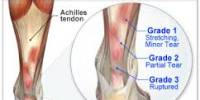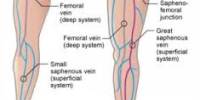Thanks to a recent breakthrough technology created by a research team from Griffith University and UNSW Sydney, flexible implanted electronics are one step closer to therapeutic applications.
The work was pioneered by Dr. Tuan-Khoa Nguyen, Professor Nam-Trung Nguyen and Dr. Hoang-Phuong Phan (currently a senior lecturer at the University of New South Wales) from Griffith University’s Queensland Micro and Nanotechnology Centre (QMNC) using in-house silicon carbide technology as a new platform for long-term electronic biotissue interfaces.
The Australian National Nanofabrication Facility’s (ANFF-Q) Queensland node, which is housed in the QMNC, served as the project’s host.
A firm called ANFF-Q was founded as part of the National Collaborative Research Infrastructure Strategy to offer Australia’s researchers access to nano- and microfabrication facilities.
Wide band gap materials are a class of semiconductors with electrical properties that fall between non-conducing materials like glass and semi-conducing materials like silicon utilized in computer chips.
The QMNC provides unique capabilities for the development and characterization of these materials. These characteristics enable the operation of these materials’ devices in harsh environments such high voltage, high temperature, and corrosive environments.
Implantable and flexible devices have enormous potential to treat chronic diseases such as Parkinson’s disease and injuries to the spinal cord. These devices allow for direct diagnosis of disorders in internal organs and provide suitable therapies and treatments. For instance, such devices can offer electrical stimulations to targeted nerves to regulate abnormal impulses and restore body functions.
Dr. Tuan-Khoa Nguyen
This project received silicon carbide materials from the QMNC and ANFF-Q, as well as enhanced characterisation facilities for reliable micro/nanobioelectronic systems.
“Implantable and flexible devices have enormous potential to treat chronic diseases such as Parkinson’s disease and injuries to the spinal cord,” Dr. Tuan-Khoa Nguyen said.
“These devices allow for direct diagnosis of disorders in internal organs and provide suitable therapies and treatments. For instance, such devices can offer electrical stimulations to targeted nerves to regulate abnormal impulses and restore body functions.”
The requirement for direct interaction with biofluids makes it difficult to sustain their long-term operation once implanted.
The research group created a strong and useful material system that could get past this obstruction.
“The system consists of silicon carbide nanomembranes as the contact surface and silicon dioxide as the protective encapsulation, showing unrivalled stability and maintaining its functionality in biofluids,” Professor Nam-Trung Nguyen said.
“For the first time, our team has successfully developed a robust implantable electronic system with an expected duration of a few decades.”
The researchers used animal models to demonstrate a variety of impedance and temperature sensors, neural stimulators, and successful peripheral nerve stimulation.
According to the corresponding author, Dr. Phan, implanted devices like deep brain stimulators and cardiac pacemakers have the potential to treat a number of chronic conditions quickly.
“Traditional implants are bulky and have a different mechanical stiffness from human tissues that poses potential risks to patients. The development of mechanically soft but chemically strong electronic devices is the key solution to this long-standing problem,” Dr. Phan said.
The idea of silicon carbide flexible electronics opens up exciting possibilities for neurology and neural stimulation therapies, which could deliver life-saving treatments for debilitating neurological conditions and hasten patient recovery.
“To make this platform a reality, we are fortunate to have a strong multidisciplinary research team from Griffith University, UNSW, University of Queensland, Japan Science and Technology Agency (JST) ERATO, with each bringing their expertise in material science, mechanical/electrical engineering, and biomedical engineering,” said Dr. Phan.
















